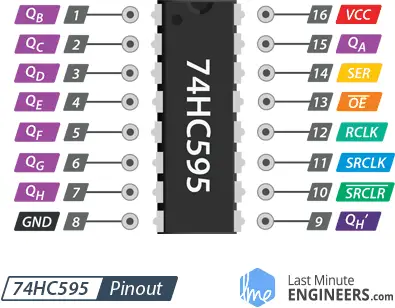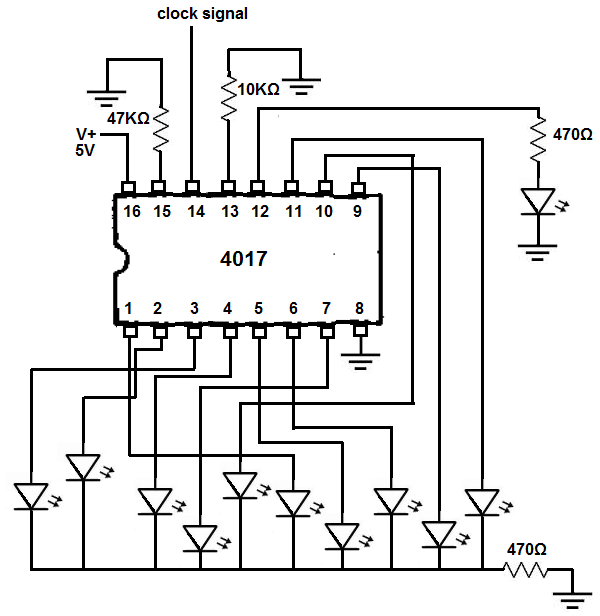How to use a BC337 transistor?
Transistors are crucial components in electronic circuits, serving as amplifiers, switches, and signal modulators. The BC337 transistor is a popular choice among hobbyists and professionals due to its versatility and reliability. In this guide, we will explain how to properly use a BC337 transistor in your electronic projects.
Understanding the BC337 transistor
The BC337 is a general-purpose NPN bipolar junction transistor commonly used in low-power applications. It is suitable for amplification, switching, and signal processing tasks in electronic circuits. The transistor is housed in a TO-92 package with three leads: the emitter (E), base (B), and collector (C).
Pinout diagram

Before using the BC337 transistor, it is essential to familiarize yourself with its pinout configuration. The pinout diagram above illustrates the Emitter (E), Base (B), and Collector (C) leads of the transistor. Make sure to connect the leads correctly to avoid damaging the component.
Common applications
- Amplification: The BC337 can be used to amplify weak signals in audio circuits, sensors, and communication devices.
- Switching: It can act as an electronic switch to control the flow of current in various applications.
- Signal modulation: The transistor is ideal for modulating signals in radio frequency circuits and data transmission systems.
Basic circuit setup
To use the BC337 transistor in your circuit, follow these steps:
- Step 1: Identify the Emitter (E), Base (B), and Collector (C) leads of the transistor based on the pinout diagram.
- Step 2: Connect the Emitter lead to the ground or negative terminal of the power source.
- Step 3: Apply a small input signal to the Base lead through a resistor to control the transistor’s conductivity.
- Step 4: Connect the load (e.g., LED, motor) to the Collector lead to control the output of the circuit.
By following these steps, you can create simple circuits using the BC337 transistor for amplification, switching, or signal processing purposes. Experiment with different configurations to understand the transistor’s behavior in various applications.
Troubleshooting tips
If you encounter issues while using the BC337 transistor, consider the following troubleshooting tips:
- Check the polarity: Ensure that you have connected the transistor leads correctly according to the pinout diagram.
- Test the input signal: Verify that the input signal to the Base lead is within the transistor’s operating range.
- Check for short circuits: Inspect the circuit for any short circuits or incorrect connections that may affect the transistor’s performance.
By following these troubleshooting tips, you can identify and resolve issues with the BC337 transistor in your circuits, ensuring optimal performance and reliability.
In conclusion, the BC337 transistor is a versatile component that can enhance the functionality of your electronic projects. By understanding its pinout, applications, and basic circuit setup, you can leverage the transistor’s capabilities effectively. Experiment with different configurations and applications to explore the full potential of the BC337 transistor in your electronic designs.
How to use a BC337 transistor?
Transistors are crucial components in electronic circuits, serving as amplifiers, switches, and signal modulators. The BC337 transistor is a popular choice among hobbyists and professionals due to its versatility and reliability. In this guide, we will explain how to properly use a BC337 transistor in your electronic projects.
Understanding the BC337 transistor
The BC337 is a general-purpose NPN bipolar junction transistor commonly used in low-power applications. It is suitable for amplification, switching, and signal processing tasks in electronic circuits. The transistor is housed in a TO-92 package with three leads: the emitter (E), base (B), and collector (C).
Pinout diagram

Before using the BC337 transistor, it is essential to familiarize yourself with its pinout configuration. The pinout diagram above illustrates the Emitter (E), Base (B), and Collector (C) leads of the transistor. Make sure to connect the leads correctly to avoid damaging the component.
Common applications
- Amplification: The BC337 can be used to amplify weak signals in audio circuits, sensors, and communication devices.
- Switching: It can act as an electronic switch to control the flow of current in various applications.
- Signal modulation: The transistor is ideal for modulating signals in radio frequency circuits and data transmission systems.
Basic circuit setup
To use the BC337 transistor in your circuit, follow these steps:
- Step 1: Identify the Emitter (E), Base (B), and Collector (C) leads of the transistor based on the pinout diagram.
- Step 2: Connect the Emitter lead to the ground or negative terminal of the power source.
- Step 3: Apply a small input signal to the Base lead through a resistor to control the transistor’s conductivity.
- Step 4: Connect the load (e.g., LED, motor) to the Collector lead to control the output of the circuit.
By following these steps, you can create simple circuits using the BC337 transistor for amplification, switching, or signal processing purposes. Experiment with different configurations to understand the transistor’s behavior in various applications.
Troubleshooting tips
If you encounter issues while using the BC337 transistor, consider the following troubleshooting tips:
- Check the polarity: Ensure that you have connected the transistor leads correctly according to the pinout diagram.
- Test the input signal: Verify that the input signal to the Base lead is within the transistor’s operating range.
- Check for short circuits: Inspect the circuit for any short circuits or incorrect connections that may affect the transistor’s performance.
By following these troubleshooting tips, you can identify and resolve issues with the BC337 transistor in your circuits, ensuring optimal performance and reliability.
In conclusion, the BC337 transistor is a versatile component that can enhance the functionality of your electronic projects. By understanding its pinout, applications, and basic circuit setup, you can leverage the transistor’s capabilities effectively. Experiment with different configurations and applications to explore the full potential of the BC337 transistor in your electronic designs.



